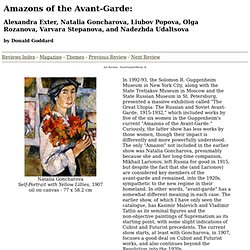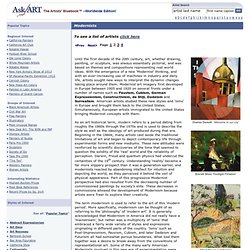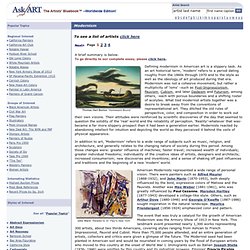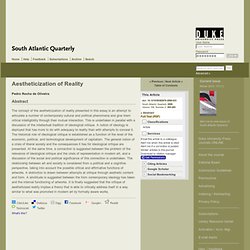

Amazons of the Avant-Garde at the Guggenheim NY Reviewed by Donald Goddard. The multiple levels of meaning that Cubism suggested in the first place were only finally realized by Gris and Duchamp who, in very different manners, achieved a new kind of illusionistic space, beyond the flat surface of the painting, that demands intellectual and emotional involvement.

And so it is for the women artists in this exhibition and their compatriots. Their subjects are more likely to be active and contextual--Rozanova's Fire in the City, Popova's Traveling Woman, Udaltsova's Restaurant, etc. --perhaps through their contact with Italian Futurism. They occasionally deal with art subjects--still lifes, portraits--but are more usually concerned with a totality of experience, for instance that of peasants and workers in Goncharova's early "primitivist" work and Malevich's early Cubist work. In Airplane Over a Train (1913), Goncharova joined earth and sky, two eras of invention, two machines in a single spiritual space and single, almost comic image. "VAN DOESBURG AND THE INTERNATIONAL AVANT-GARDE: CONSTRUCTING A NEW WORLD" - ProQuest.
SELECT LIBRARY. EBSCOhost: IN DEFENCE OF MODERNISM. EBSCOhost: The Densities of Modernism. EBSCOhost: Modernism. Reconfiguring Modernism: Explorations in the Relationships Between Modern Art and Modern Literature - ProQuest. The Southern Demiurge at Work: Modernism, Literary Theory and William Faulkner's "Dry September" - ProQuest. Getting started. Amandanoeldorsey. Modernism - Literature Periods & Movements. Literature Network » Literary Periods » Modernism The Modernist Period in English Literature occupied the years from shortly after the beginning of the twentieth century through roughly 1965. In broad terms, the period was marked by sudden and unexpected breaks with traditional ways of viewing and interacting with the world. Experimentation and individualism became virtues, where in the past they were often heartily discouraged. SELECT LIBRARY. Modernism: Art for Art's Sake.
2.

Art for Art's Sake By the early 20th century, progressive modernism came to dominate the art scene in Europe to the extent that conservative modernism fell into disrepute and was derided as an art form. It is well to remember that for most of the 20th century, we have fostered a narrow view of the modernist period, one in which progressive modernism has received almost exclusive attention while conservative modernism has been largely ignored. Conservative modernists, though, the so-called academic painters of the 19th and early 20th centuries, believed they were doing their part to improve the world.
In contrast to the progressive modernists, conservative modernists presented images that contained or reflected good conservative moral values, or served as examples of virtuous behaviour, or offered inspiring Christian sentiment. Some Characteristics of Modernism in Literature. Some Characteristics of Modernism in Literature Modernist writers proclaimed a new "subject matter" for literature and they felt that their new way of looking at life required a new form, a new way of writing.

Writers of this period tend to pursue more experimental and usually more highly individualistic forms of writing. The sense of a changing world was stimulated by radical new developments, such as: Modernism In Literature. Log in to use SFCC Library online services. Modernism (art) : Introduction. From the Encyclopædia Britannica.

Modernist - Post-Impressionism, Fauvism, Cubism, German Expressionism, Constructivism, de Stijl, Dadaism and Surrealism. Until the first decade of the 20th century, art, whether drawing, painting, or sculpture, was always essentially pictorial, and was based on themes and compositions representing real world ideas.

With the emergence of a new ‘Modernist’ thinking, and with an ever-increasing use of machines in industry and daily life, artists sought new ways to interpret the dynamic changes taking place around them. Modernist art imagery first developed in Europe between 1905 and 1920 on several fronts under a number of names such as Fauvism, Cubism, German Expressionism, Constructivism, de Stijl, Dadaism and Surrealism.
American artists studied these new styles and ‘isms’ in Europe and brought them back to the United States. Simultaneously, European artists immigrated to the United States bringing Modernist concepts with them. Modernists Art - Post-Impressionism, Fauvism, Cubism, and Dadaism and Futurism. A brief summary is below.

To go directly to our complete essay, please click here. Defining modernism in American art is a slippery task. As an art historical term, ‘modern’ refers to a period dating roughly from the 1860s through 1970 and to the style as well as the ideology of art produced during that era. Book Review: Modernist America — www.historytoday. Modernist America Art, Music, Movies, and the Globalisation of American Culture Richard Pells Yale University Press 512pp £25 ISBN 978 0300115048 Buy this book In the ever-slippery effort to define Modernism – a movement spanning nations, taking root in almost every discipline of the arts from the early 20th century onwards and spawning a profusion of sub-species (Dadaism, Vorticism, Objectivism, Futurism, Surrealism, Absurdism ...) – the modernist (though at different times Objectivist and Imagist) poet Ezra Pound’s terse mantra has often been invoked: ‘Make it new!’

Now even these few reliable words turn foul - at least in the case of America. Modernism, the Market and the Institution of the New - ProQuest. Modernist America: Art, Music, Movies, and the Globalization of American Culture - Richard Pells, Richard H. Pells. JSTOR: The Art Bulletin, Vol. 76, No. 3 (Sep., 1994), pp. 411-426. The Art Bulletin, Vol. 76, No. 3 (Sep., 1994), pp. 411-426. Aestheticization of Reality. The concept of the aestheticization of reality presented in this essay is an attempt to articulate a number of contemporary cultural and political phenomena and give them critical intelligibility through their mutual interaction.

This is undertaken in parallel with a discussion of the intellectual tradition of ideological critique. A notion of ideology is deployed that has more to do with adequacy to reality than with attempts to conceal it. "Modernologies: Contemporary Artists Researching Modernity and Modernism" - ProQuest. "Modernologies: Contemporary Artists Researching Modernity and Modernism" - ProQuest. Moscow Conceptualism, or, The Visual Logic of Late Socialism - ProQuest. Impressionistic Memories - ProQuest. ARTstor. ARTstor.